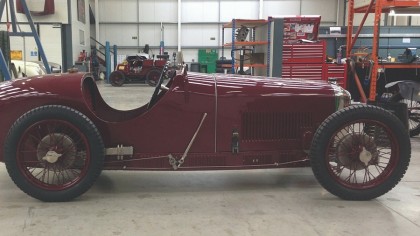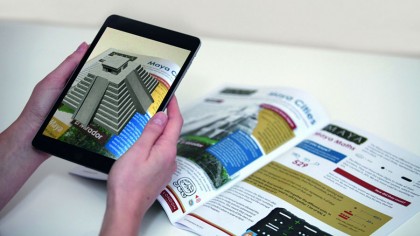Can 3D printing save history?
3D scans, 3D modelling and 3D printing to the rescue…
King Tut's tomb tech
The use of 3D scanning and 3D printers in archaeology is fast becoming decisive. In April 2016 international archaeologists in Egypt used infrared thermography to map the walls of Tutankhamun's tomb in the Valley of the Kings, which might giveaway the location in a secret chamber of the long-sought resting place of Queen Nefertiti. Even the theory about there being a hidden room at all comes solely from forensic 3D laser scans by Factum Arte in 2009 that mapped the chamber in excruciating detail to produce high-resolution 3D scans.
British Egyptologist Nicholas Reeves used the 3D data to develop an intriguing hypothesis about Nefertiti, and Factum Arte itself then went ahead and built a 1:1 replica of Tutankhamun's tomb, which opened two years ago.

Recreating lost artefacts
While the riches of Tutankhamun's tomb – pulled out of the ground in 1922 – are now safely (well, safe-ish) locked away in Cairo's Egyptian Museum, until recently a vintage Amilcar from just a few years later lay in tatters.
That was until engineering company KWSP from Brackley in Northamptonshire, UK, manufactured a one-off gearbox cover using only an old black and white photograph of the car. KWSP design engineers measured and scanned the existing gearbox and then created CAD data of the complete historic assembly in 1927, reverse-engineering the entire vehicle before 3D printing the components they needed.
"It has been a fascinating and hugely rewarding challenge to use the latest in digital fabrication to recreate a unique component, using modern manufacturing design techniques that interface with an assembly that was handmade in the 1920s," says Kieron Salter, managing director of KWSP.
"This is where advances in 3D printing really bring value, but it's not just about pressing a button and producing an object in three dimensions," he added, stating that the real added value is in the design validation and final manufacturing.

Virtual reconstruction
As well as digital reconstruction, 3D imagery of objects and artefacts can also be used extensively in the virtual space. The London Grid for Learning (LGfL) just won an award at BETT for its Maya: A Journey through the Maya World digital teaching resource, which uses augmented reality. It also makes available 3D printing files for some of the AR artefacts – a model of the Maya flute can be downloaded and recreated with a 3D printer.
Are you a pro? Subscribe to our newsletter
Sign up to the TechRadar Pro newsletter to get all the top news, opinion, features and guidance your business needs to succeed!
Digital defiance
Although Palmyra is getting all the headlines, the Institute for Digital Archaeology is planning more 3D-printed replications throughout 2016 and 2017. "It is our hope that it will become a model for future similar endeavours," says the IDA's website. "While there are those who seek to encourage us to forget the past – to forget the shared history that unites us – we are dedicated to ensuring that the visual reminders that keep that history alive remain a part of the human experience."
Palmyra's famous Arch of Triumph may have gotten fast-tracked, but the list of world heritage sites destroyed or damaged by Daesh alone is extensive. Lives need rebuilding in Syria way more than Palmyra, of course, but with 3D modelling and printing techniques maturing fast, the age of defiant digital reconstruction is quickly taking shape – and the Universe of Things just got a whole lot more serious.
- 1
- 2
Current page: King Tut's tomb and virtual reconstruction
Prev Page Introduction and eye in the skyJamie is a freelance tech, travel and space journalist based in the UK. He’s been writing regularly for Techradar since it was launched in 2008 and also writes regularly for Forbes, The Telegraph, the South China Morning Post, Sky & Telescope and the Sky At Night magazine as well as other Future titles T3, Digital Camera World, All About Space and Space.com. He also edits two of his own websites, TravGear.com and WhenIsTheNextEclipse.com that reflect his obsession with travel gear and solar eclipse travel. He is the author of A Stargazing Program For Beginners (Springer, 2015),
